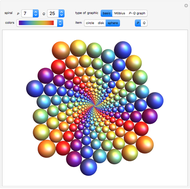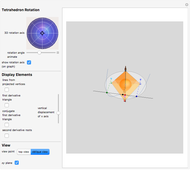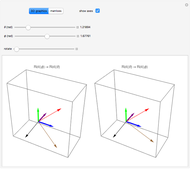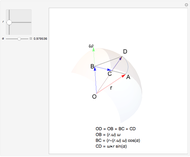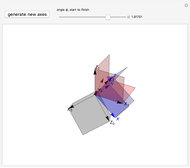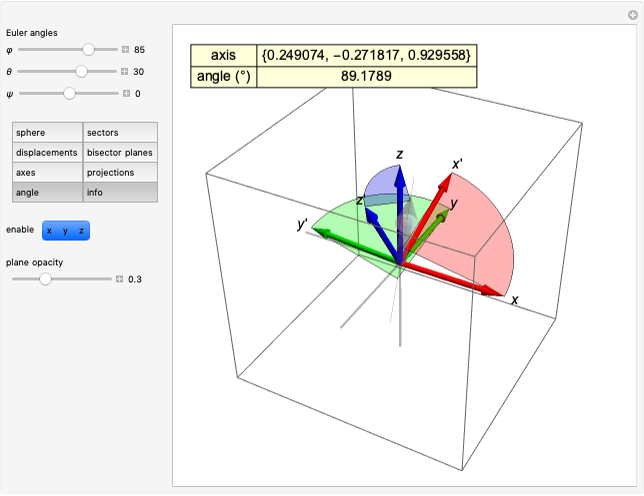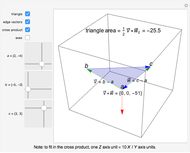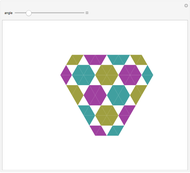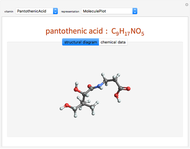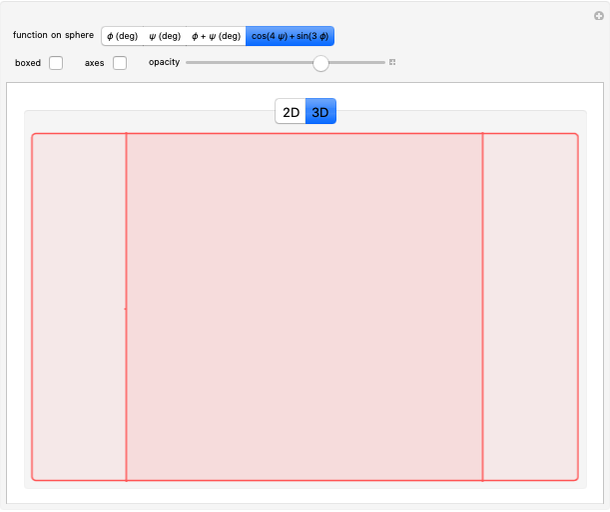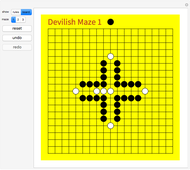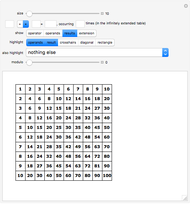Composing Rotations via Hamilton Turns

Requires a Wolfram Notebook System
Interact on desktop, mobile and cloud with the free Wolfram Player or other Wolfram Language products.
Sir William Rowan Hamilton, of quaternion fame, also proposed a geometric construction to compose three-dimensional rotations using what he called turns. A turn is a directed arc on a great circle of the unit sphere. Such turns can be added like vectors, by sliding them along their great circle to place them head-to-tail. A rotation operation corresponds to a turn that spans one-half of the rotation angle on the great circle perpendicular to the rotation axis. The turn corresponding to two successive rotations is the sum of the turns of the two rotations, in order of application. These operations are not commutative.
Contributed by: Tom Verhoeff (February 2021)
(Eindhoven University of Technology)
Open content licensed under CC BY-NC-SA
Snapshots
Details
You can specify the two rotation operations, shown in red and blue, by setting their axes and rotation angles with the appropriate sliders. A rotation is equivalent to the composition of two reflections in planes that intersect the rotation axis with a dihedral angle equal to one-half of the rotation angle. This pair of reflection planes can still be rotated freely about the rotation axis, as long as the dihedral angle stays the same. Here, we choose one of those reflection planes to pass through both rotation axes, namely, the second reflection plane for the red rotation and the first reflection plane for the blue rotation. This way, when composing the red and blue rotations, the shared reflection in the middle cancels. Thus, we are left with an operation defined as two successive reflections, which is again a (purple) rotation. The composite rotation's axis is then the intersection of those outer two reflection planes, and the composite rotation's angle is twice the dihedral angle of those planes. This also confirms Euler's rotation theorem.
You can reveal the reflection planes with the "mirrors" button. This also shows their normal vectors, which end somewhere on the great circle perpendicular to the rotation axis. Use the "opacity" slider to see the normals. The directed arc from the normal of the first mirror plane to the normal of the second mirror plane is that rotation's turn. These turns are positioned head-to-tail because of our choice of the mirror planes. You can see the turns with the "turns" button. The "composed" button shows the composition (as a purple rotation) of first performing the red rotation and then the blue rotation.
The "time" slider rotates a house on the sphere according to the red rotation, then the blue rotation, and also the composite rotation (if enabled by option "composed").
You can use the buttons at the bottom to flip and commute the red and blue rotations. By swapping the red and blue rotations, you can see that composition of three-dimensional rotations is not commutative (unless their axes align). The resulting rotation angle is independent of the order.
A quaternion is also based on one-half of the rotation angle, and it directly encodes a turn. Multiplication of quaternions thereby corresponds to addition of turns.
Permanent Citation






